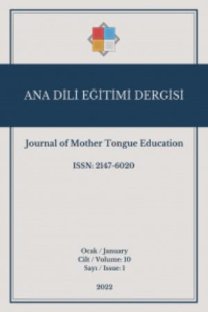Türkçe Öğretiminde Etkinlik Yaklaşımı
Derslerde öğrenmeyi kolaylaştırmak amacıyla çeşitli çalışmalar yapılmaktadır. Bunlara öğrenme etkinlikleri denilmektedir. Öğrenme etkinlikleri alıştırma, etkinlik, görev, atölye, proje vb. olarak karşımıza çıkmaktadır. Bunların uygulanması eğitim yaklaşımlarına göre değişmektedir. Davranışçı yaklaşımda alıştırma üzerinde durulmaktadır. Alıştırmalarda amaç üzerinde çalışılan konuların pekiştirilmesini sağlamaktır. Bu amaçla öğrenilenleri tekrar etme, temrin, talim ve yineleme çalışmaları yapılmaktadır. Bu yönüyle alıştırmalar davranışçı yaklaşımın temel dil öğretim aracı olmuş ve okullarda yıllarca uygulanmıştır. Yapılandırıcı yaklaşımda ise etkinlik verilmektedir. Etkinliklerin amacı öğrencilerin dili istekli ve aktif öğrenmelerini sağlamaktır. Etkinlik yaklaşımına göre "Dil, sosyal etkileşim aracıdır." Bireyler toplumda çeşitli rol ve görevleri yerine getirirken dili aktif olarak kullanırlar. Bu nedenle dil öğretimi çeşitli görev, proje ve etkinliklerle yürütülmelidir. Etkinlik yaklaşımı, Diller İçin Avrupa Ortak Başvuru Metninde benimsenen bir yaklaşımdır. Bu yaklaşıma göre öğrencilerin çeşitli etkinlik ve görevleri yapmaları dil öğrenme sürecini kolaylaştırmakta, dil ve zihinsel becerileri geliştirmektedir. Etkinlik yaklaşımı 2005 yılından bu yana Türkçe öğretiminde de uygulanmaktadır. 2005 Türkçe Öğretim Programında yapılandırıcı yaklaşımla birlikte etkinlik yaklaşımı temel alınmış, öğrencilerin dil, zihinsel, duygusal ve sosyal becerilerini geliştirmek için Türkçe öğretiminin etkinliklerle yürütülmesi öngörülmüştür. Programda çeşitli etkinlik örnekleri verilmiş ve nasıl uygulanacağı açıklanmıştır. Ancak alanda bazı sorunların olduğu, etkinlik yerine alıştırmaların verildiği ve alıştırmalarla Türkçe öğretildiği görülmektedir
Activity Approach In Turkish Teaching
Various practices are carried out during lessons in order to enhance learning. These practices are referred to as learning activities. Learning activities may take different forms such as exercises, tasks, workshops, projects, etc. The implementation of those activities varies depending on the adopted educational approaches. In the Behaviorist approach the focus is on exercises. The purpose of doing exercises is to provide reinforcement of the subjects studied. To that end, repetition, practice, drilling, and iteration practices are used. Thus, exercises have become the main language teaching tool of the Behaviorist approach and they have been used in schools for many years. On the other hand, activities are used in the Constructivist approach. The purpose of activities is to have students learn language willingly and actively. In the Activity approach, “Language is a tool for social interaction”. Individuals in a society use language actively while performing various roles and tasks. Therefore, language teaching should be done through various tasks, projects, and activities. The Activity approach is an approach adopted in the Common European Framework. According to this approach, students’ performing of various activities and tasks facilitates the language learning process and develops their language and mental skills. The activity approach has been used in teaching Turkish since 2005. In the 2005 Turkish teaching curriculum the Constructivist approach was considered fundamental along with the Activity approach and teaching Turkish was planned to be done through activities in order to develop students’ language, mental, emotional, and social skills. In the program, various activity samples were provided and instructions as to how to implement them were given. However, it is observed that some problems exist in practice, exercises are given instead of activities, and Turkish is taught through exercises
___
- Barnier,G.(2005).L’approche socio-constructive des apprentissages scolaires,Psychologie de l’éducation, Thème 2.IUFM d’aix-Marseille.
- Basque, J. (1999). L’İnfluence du Béhaviorisme, du Cognitivisme et du Constructivisme sur le Design Pédagogique,Actes du XIIe Colloque du CIPTE, Montréal.
- Bertocchini,P. ve Costanzo,E. (2014).La Notion d'exercice, Le Français Dans le Monde,12.12.2016 tarihinde www.fdlm.orgadresindenerişilmiştir.
- Besse,H.ve Porquier,R.(1984). Grammaire etdidactique des langues, Hatier-Credif. Bouchard, R. (1985)Le texte, de phrase en phrase, in Le Français dans le monde 192, Grammaire de texte, Paris.
- CECR (2000). Cadre européen commun de référence pour les langues. Apprendre, enseigner, évaluer, Division Des Langues Vıvantes, Strasbourg, Conseil de l’Europe,Didier.
- Cedlova,M. (2013).Tâches et activités : au service de l'enseignement-apprentissage en FLE, Západočeská univerzita v Plzni Fakulta filozofickáPlzeň.
- Conejo López-Lago,E. (2006). Qu’est-ce qu’une tâche ?,Rahmen des Projektes “EspañolOnline” adapté en français par Philippe Liria, 10.11.2016 tarihinde http://www.difusion.com/uploads/2004/Ideas/Recursos/1246.pdfadresinden erişilmiştir.
- Conseil de l’Europe et Commission européenne,(2001). T-kit, Une méthodologie de l’apprentissage des langues,Editions du Conseil de l’Europe, Strasbourg Cedex.
- DİSCAS.(2005). L'activité d'apprentissage,Les archives de DISCAS,02.01.2006 tarihinde www.csrdn.qc.ca/discas/Apprentissage/activiteApprentissage adresinden erişilmiştir.
- Gerard, F.-M. & Braibant, J.-M. (2003). Activités de structuration et activités fonctionnelles, même combat ? Le cas de l’apprentissage de la compétence en lecture à l’école primaire, Français.
- Güneş, F. (2014). Sınıf yönetimi yaklaşım ve modeller. Ankara: Pegem A Yayınları.
- Güneş, F.(2015). Türkçe Öğretimi Yaklaşımlar ve Modeller.Ankara: Pegem A Yayınları. Labédie, G. ve Amossé, G.(2001). Constructivisme ou socio-constructivisme?. Pädagogisches Institut der deutschen Sprachgruppe, Bozen DDEC de Nantes.
- Mangenot F. (2000) Quelles tâches dans ou avec les produits multimédias ?, in actes du colloque Triangle XVII, "Multimédia et apprentissage des langues étrangères". Paris, ENS-Editions. 05.03. 2005 tarihinde http://www.u-grenoble3. fr/espace_pedagogique/triangle.htmadresinden erişilmiştir.
- MEB.Talim ve Terbiye Kurulu Başkanlığı (2005).İlköğretim Türkçe Dersi Öğretim Programı ve Kılavuzu.Ankara: MEB Basımevi.
- Pollet, D.(2015). Elève : acteur actif de son apprentissage : le triple a gagnant ?Analysen°15 FAPEO, 10.12. 2015 tarihindewww.fapeo.be/analyses adresinden erişilmiştir.
- Pourtois, J-P., Desmet, H.(2002). L’éducation postmoderne, 3ème Edition, PUF, Paris.
- Puren,C.(2004).L’evolutıon Historique Des Approches En Didactique Des Langues-Cultures ou Comment Faire L’unite Des « Unites Didactiques », Congrès Annuel del’Association pour la Diffusion de l’Allemand en France (ADEAF),École Supérieure de Commerce de Clermont-Ferrand, 2-3 Novembre 2004,France.
- Robert, J.-P. (2008).Dictionnaire pratique de didactique du FLE. Lassay-les-Châteaux : EMD S.A.S.
- Tomé, M. (2006).Vers une typologie des ressources, supports et dispositifs Internet pour le français langue étrangère,Revista Estudios Humanisticos, Filología, nº 28, Universidad deLeón, León.
- Vigner, G.(1984).L’Exercice dans laclasse de français, Edition Hachette.
- ISSN: 2147-6020
- Yayın Aralığı: Yılda 4 Sayı
- Başlangıç: 2013
- Yayıncı: Mehmet Kurudayıoğlu
